The difficulty level of climbing any mountain depends on the pressure applied to the mountain climber when ascending and descending it and how difficult the trek is for them.
Many factors determine the level of difficulty of a mountain such as the technique that the mountain climber uses for his trek. In this article, we’ll discuss the three main factors that are important for determining Mount Damavand difficulty: The Mountain itself, the climbing season, and the trekking route.
The difficulty of trekking on Mount Damavand can be analyzed from two different aspects. The first one is the overall features of Mount Damavand such as Mount Damavand elevation, amount of snow, and ice on the mountain and weather conditions.
The second one is the characteristics of the chosen Damavand trekking route such as slope, surface type, and the necessity of equipment such as rope, harness, crampon, ice axe, etc. in more technical parts of the route.
This article will discuss the different aspects of Damavand’s difficulty level and Climbing Grade based on years of experience that the mountain guides at Cheetah-Adventure have.
We intend to provide you with accurate and precise information on the general condition of Mount Damavand during summer (Mount Damavand trekking season) thus you’ll be mentally and physically prepared for your Damavand trekking tour.
General features of Mount Damavand
With 5610 m of elevation, Mount Damavand is classified among the 5000-meters-high mountains, a mountain climbing term for mountains between 5000 m to 6000 m high.
The high elevation of Mount Damavand, similar to Mount Kilimanjaro (5895 m), can turn acclimatization into a challenge. This means that mountain climbers with average mountain climbing experience have to complete a proper acclimatization process in order to climb Mount Damavand without being affected by its high elevation and ensuing low oxygen pressure.
During summer (June to September), the common Damavand trekking season, there’s not much snow on the mountain and only a little snow can be seen after 4000 m of elevation. Therefore, the snow won’t be an issue for the mountain climbers. In addition, the weather is normally stable during this season and the only possible problem may be strong winds on some days.
The average temperature on Damavand summit is between -5 and 5 Celsius degrees doing summer, less cold than other summits with this range of elevation. One of the unique features of Mount Damavand is the sulfuric gas emitted near the summit.
It’s best to avoid direct exposure to the gas and cover your face with a scarf. This feature is specific to volcanos.
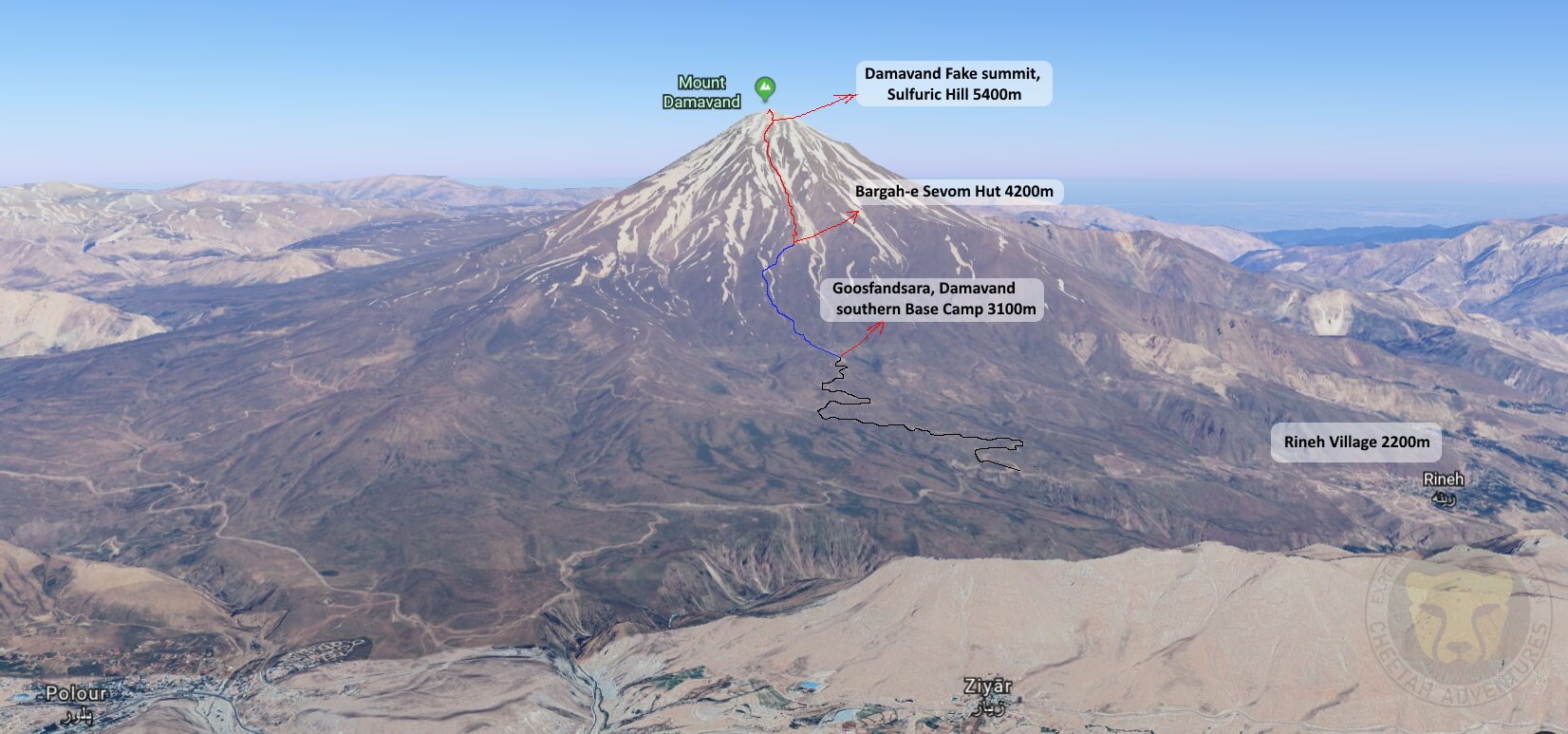
Damavand trip map from south ridge path-Mount Damavand Difficulty
Characteristics of Damavand Trekking routes (Damavand routes’ condition)
The foothills of Mount Damavand generally have a gentle slope. Among Damavand trekking routes the southern route is the most commonly used and the northern route, northeastern route, and western route are after that.
Climbing Mount Damavand through any of these routes won’t require mountain climbing equipment such as ropes as these Damavand trekking routes are normal trekking routes. Thus for conquering Damavand peak, it’s only necessary to have the ability to trek for 3 days. The route leading up to the camp located at 4200 m of elevation is an easy trail and has a slope of 10-20 degrees.
Usually, a day of Damavand tour will be spent at the camp and for acclimatization and the next day will be summit day.
The rest of the Damavand trekking route leading up to Damavand summit has a medium slope of 15-25 degrees. The only differences between this part of the route (above 4500 m) and the previous one are the existence of small amounts of snow, more elevation, and colder weather.
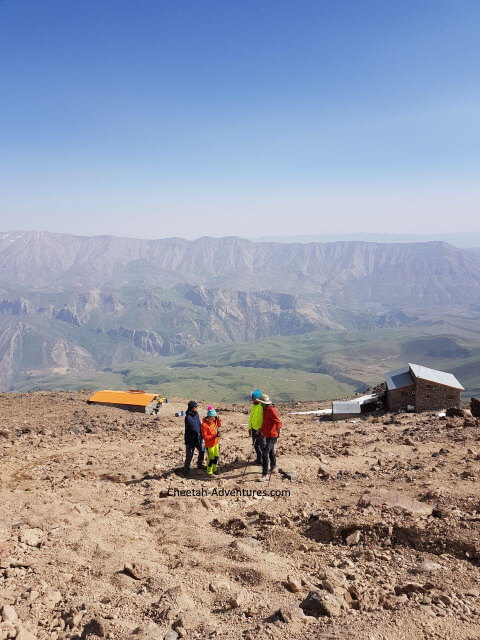
A view of Bargah-e Sevom hut (4200m), Dobarar Range at the background-Mount Damavand Difficulty and climbing grade
Conclusion
The high elevation of mount Damavand can be a little challenging for some mountain climbers; however, it is fixable with proper acclimatization. Regarding other factors, Damavand trek is not generally a technical one, therefore, those that are in good physical shape can enjoy a great Damavand trekking tour with and successfully conquer Damavand peak accompanied by a certified Iranian mountain guide.
It’s important to note that this article is written about Damavand trek in the trekking season and through normal Damavand trekking routes. It’s obvious that Damavand difficulty level changes in case of choosing technical routes or climbing Damavand another time.
Read More about Mount Damavand Facts & Infos. If you plan to climb Damavand, Please checkout Cheetah-Adventures Damavand Tour Page.
If you are traveling to Iran, You better know Iran Destinations and also Tips to know before visiting Iran.

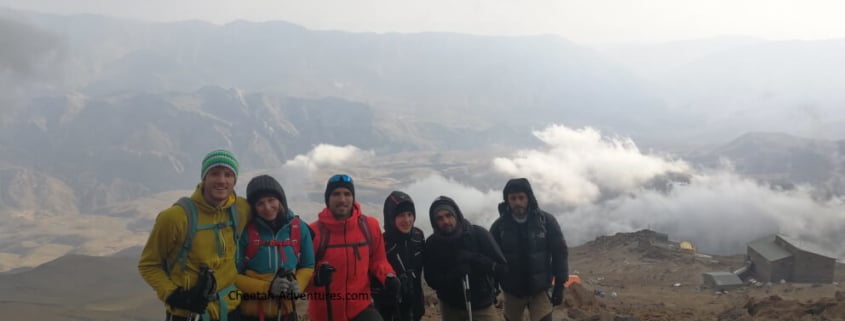
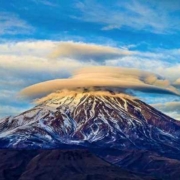


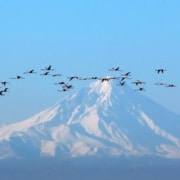




Leave a Reply
Want to join the discussion?Feel free to contribute!